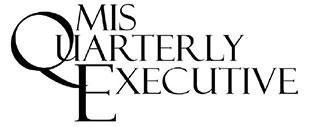- Posted Feb. 18, 2020
A Ten-Step Decision Path to Determine when to use Blockchain Technologies
Study: Presents a ten-step decision path to help determine the justified application of a blockchain
Problem:Many organizations are looking at blockchain technologies. However, the drawbacks of blockchain databases (e.g., scalability, capacity, latency, privacy) mean that the technology is not always appropriate. This article presents a ten-step decision path that can help determine whether the application of blockchain is justified and, if so, which kind of blockchain technology to use. We describe how this decision path was used to develop a blockchain prototype for the Danish maritime shipping industry.
How it was studied:Recent research on blockchain technology shows faster growth of its adoption in tracking supply chain activities than in banking and financial services. This study focused on how maritime shipping can realize benefits of blockchains, especially by consulting a new managerial framework to assess feasibility and also determine what type of system to implement. A ten-step yes/no decision process provides guidance on whether a block chain is required, and if so, recommends a permissionless public blockchain, permissioned public blockchain, or a permissioned private blockchain. Knowing the type of needed blockchain system will prevent the loss of valuable time and will reduce expenses in their application.
Take away:General take-aways:
- Blockchain technology provides a bewildering set of options without much guidance.
- Firms must decide not only the feasibility of using blockchain technology but also which type of system to use: permissionless public blockchain, permissioned public blockchain, or a permissioned private blockchain.
- Ten decision steps can be followed to narrow the options dramatically. The ten questions are described in detail and address issues such as whether there is a need for sharing data publicly or with multiple parties, if it is desirable to use third parties, whether there are conflicts of interest or differing or changing rules, if logs are needed, and how consensus is determined.
Publication Details
- Authors:Asger B. Pedersen
- Marten Risius
- Roman Beck
- Categories: Information Systems
- Link: https://aisel.ais...
MIS Quarterly Executive

- Year: 2019
- Volume: 18
- Issue: 2
- Pages: NA

